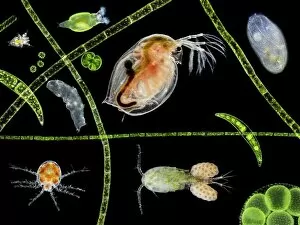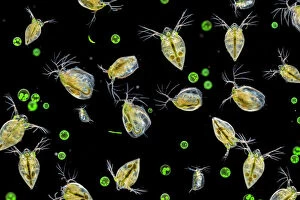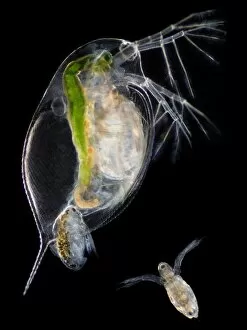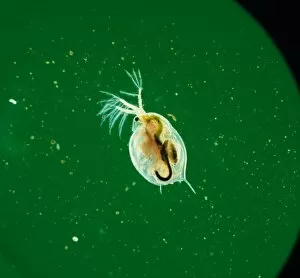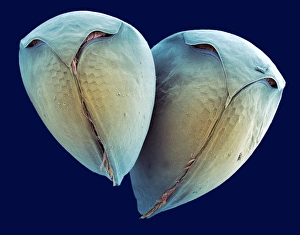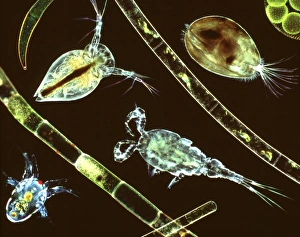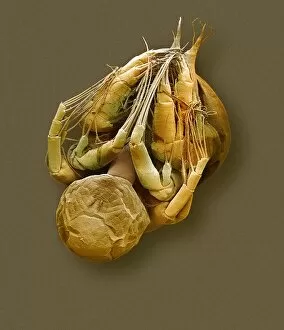Water Flea Collection
The water flea, also known as Daphnia sp. , is a fascinating creature found in various aquatic habitats such as garden ponds
All Professionally Made to Order for Quick Shipping
The water flea, also known as Daphnia sp. , is a fascinating creature found in various aquatic habitats such as garden ponds. These tiny organisms play an essential role in the pond life ecosystem. In one captivating image, they can be seen alongside green algae called Volvox aureus, creating a vibrant and lively scene. Dating back to 1833-39, a colored engraving of a water flea resembles the delicate wings of a butterfly. This artwork showcases the intricate beauty of these creatures that often go unnoticed by human eyes. Zooplankton, including water fleas and other marine organisms like crab larvae and young fish, form an integral part of the food chain in aquatic environments. Their presence ensures balance and sustenance for larger species. A close-up photograph captures water fleas confined within a petri dish, revealing their unique features up-close. The translucent bodies with elongated appendages showcase their adaptability to their watery habitat. Microscopic images provide even more insight into the world of these minuscule crustaceans. Light micrographs reveal detailed structures while scanning electron microscope (SEM) images offer stunning views at an incredibly high magnification level, and are not only visually intriguing but also serve as indicators for environmental health due to their sensitivity to pollution levels. Scientists study them extensively to monitor changes in ecosystems and assess potential threats.

